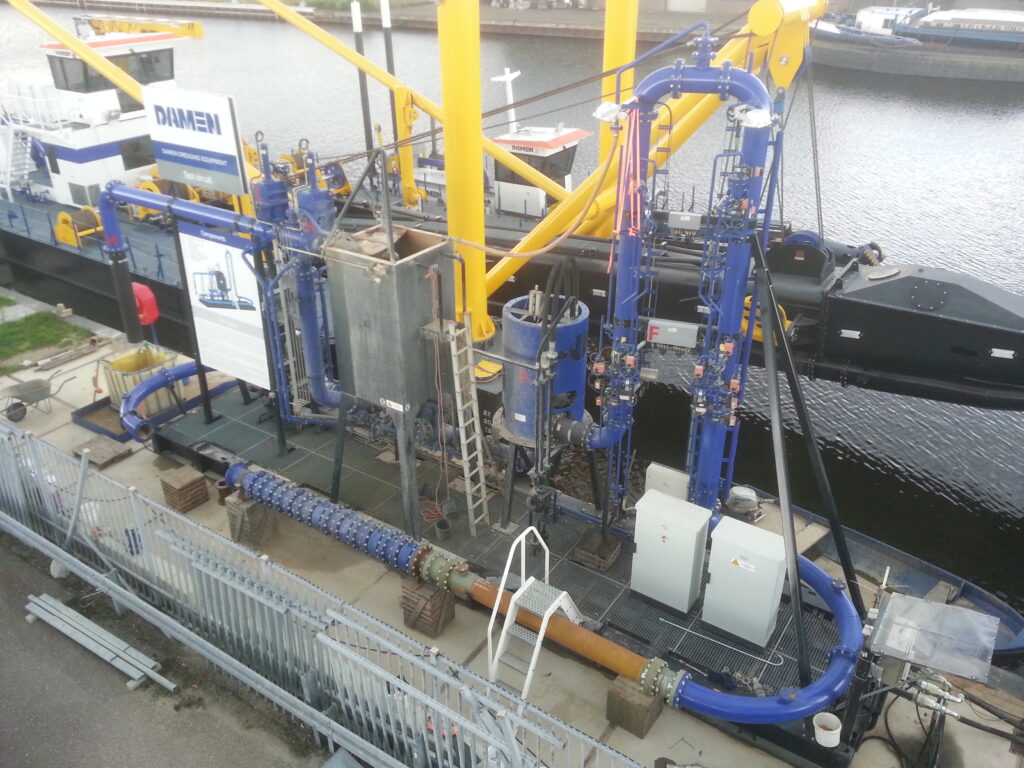Fundamentals of Hydraulic Transportation
Hydraulic slurry transport involves moving a mixture of solid particles and liquid (usually water) through pipelines, employing the principles of fluid dynamics. This method is predominantly used in mining, dredging, and construction industries to move materials like sand, gravel, crushed rock, and other particulate substances over varying distances.
Hydraulic transportation of slurry is based on the principle that solid particles can be suspended and conveyed in a liquid medium under controlled conditions. The key components to understand include:
- Slurry Composition: A slurry is a mixture of solid particles suspended in a liquid. The size, shape, and density of the particles, along with the viscosity of the liquid, affect the flow characteristics.
- Flow Regimes: Depending on the concentration and size of particles, the slurry can exhibit different flow regimes:
- Homogeneous flow: Fine particles are evenly distributed throughout the liquid.
- Heterogeneous flow: Larger particles tend to settle and may slide or roll along the pipe bottom.
- Velocity Profiles: The velocity of the slurry must be sufficient to prevent settling of solids but not so high as to cause excessive wear and tear on the pipeline. The minimum velocity to keep particles suspended is known as the ‘critical velocity’.
Dynamics of Slurry Flow
Understanding the dynamics of slurry flow is critical for efficient transport:
- Pressure Drop: Slurry flow incurs a higher pressure drop compared to clear fluid flow due to the added friction and interaction between the particles and the pipe wall. This needs to be considered when designing pumps and pipelines.
- Wear and Erosion: The abrasive nature of the slurry can lead to significant wear and erosion in pipelines and equipment. Materials and design need to be chosen carefully to mitigate these effects.
- Pump Selection: Choosing the right pump is crucial. It must be capable of handling the particle size and density, as well as the volume and type of slurry.
Dredge Pumps
Dredge pumps are a critical component in hydraulic slurry transport, especially in applications such as dredging operations where large volumes of sediment are moved:
- Types of Dredge Pumps:
- Centrifugal Pumps: Most common, using rotational energy from impellers to enhance fluid pressure.
- Positive Displacement Pumps: Used for viscous slurries or when precise flow management is needed.
- Design Considerations:
- Impeller Design: Should minimize clogging and be robust enough to handle solid particles.
- Material Selection: Abrasion-resistant materials are crucial due to the harsh nature of the slurry.
- Operational Challenges:
- Cavitation: Occurs when the local pressure drops below the vapor pressure of the liquid, causing bubbles that can damage the pump.
- Maintenance: Regular maintenance is essential to address wear and tear and to prevent failures.
Applications and Challenges
Hydraulic slurry transport is essential in industries like mining where ore is transported from mines to processing facilities. It is also used in dredging to maintain waterways, harbors, and for land reclamation projects.
Challenges include managing the high abrasive nature of the slurry, maintaining the integrity and efficiency of the pipeline and pumps, and dealing with environmental concerns related to the transport and disposal of slurries.
Conclusion
Hydraulic slurry transport is a complex but vital process in many industrial operations. Understanding the mechanics of slurry flow, proper pump selection, and robust pipeline design are crucial for efficient and sustainable operations. As technology advances, so too does the potential for more efficient and environmentally friendly slurry transport solutions.
